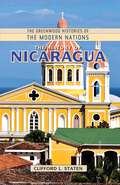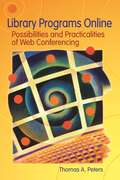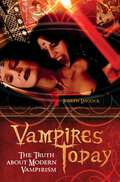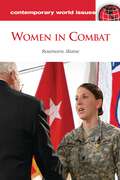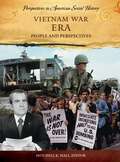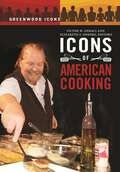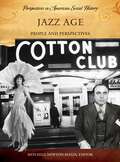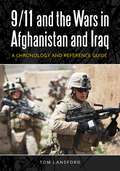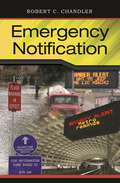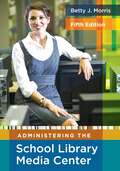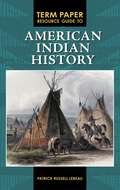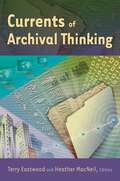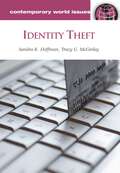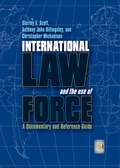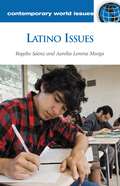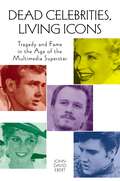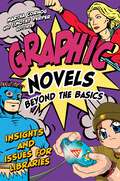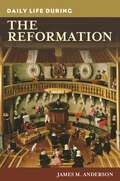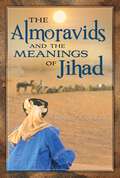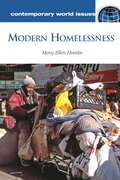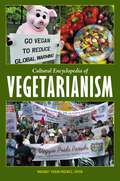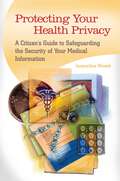- Table View
- List View
The History of Nicaragua (The Greenwood Histories of the Modern Nations)
by Clifford L. StatenThis concise history of Nicaragua provides the reader with a history of the ways in which key political and economic factors have contributed to the creation of the modern nation.Notwithstanding Nicaraguan President Daniel Ortega's disdain for the United States, our nation has played a significant role in shaping Nicaraguan nationalism, as well as the country's political, economic, and social systems. The History of Nicaragua was written, in part, to help students and other interested readers understand that relationship, providing them with an up-to-date, concise, and analytical history of the Central American nation. The book begins by describing the people, geography, culture, and current political, economic, and social systems of Nicaragua. The remainder of the volume is devoted to a chronological history, emphasizing recurring themes or factors that have shaped the modern state. These include the importance of elite families such as the Somoza dynasty that ruled for more than 40 years. Other topics include the agro-export model of economic development, modern Nicaraguan nationalism, the Sandinista revolution and its legacy, and the democratic transition that began in 1990.
Library Programs Online: Possibilities and Practicalities of Web Conferencing
by Thomas A. PetersMeet your library patrons where they increasingly live and work-online. This guide introduces you to the exciting possibilities online programs offer, and shows you how to set up online programs in your library-whether one-time stand-alone or half-day, full-day, or multi-day workshops and conferences. Public programs-from lectures, demonstrations, and interviews to book discussions and story hours can be delivered in real time (live) primarily over the web, utilizing a variety of interactive communication tools, including voice-over-IP, text chatting, and co-browsing. Furthermore, online programming can be used for district-wide staff training. The author explains how to integrate pre-recorded components of a program into a live, online public program; shows how to extend the reach and appeal of online public programs with podcasting and audiorecordings; and explains how to use voice-over-IP and video-over-IP to enhance online programs. In addition to outlining the costs of staring and operating a public online program, Peters also provides cost recovery methods and scenarios. Online public programs can extend your library's reach into the service population, grab the attention of some early adopters and opinion leaders in the community you serve, and convey to patrons and other libraries that your library is moving boldly into the digital future. Plus, many people are more likely to attend an online library program than an in-library public program. And because online programs are easily recorded and redistributed on demand, your library gets more bang for each buck it invests in its public programming outreach.Distance education programs in higher education, corporate and governmental training efforts, and other sectors of society have become commonplace, but this is the first guide to focus on how libraries (public, academic, school, and special) and library-related organizations (associations, consortia, etc.) can and are developing exciting online programs for library users and librarians.
Vampires Today: The Truth about Modern Vampirism
by Joseph P. LaycockThis book, about real vampires and the communities they have formed, explores the modern world of vampirism in all its amazing variety.Long before Dracula, people were fascinated by vampires. The interest has continued in more recent times with Anne Rice's Lestat novels, Buffy the Vampire Slayer, the HBO series True Blood, and the immensely popular Twilight. But vampires are not just the stuff of folklore and fiction. Based upon extensive interviews with members of the Atlanta Vampire Alliance and others within vampire communities throughout the United States, this fascinating book looks at the details of real vampire life and the many expressions of vampirism as it now exists.In Vampires Today: The Truth about Modern Vampirism, Joseph Laycock argues that today's vampires are best understood as an identity group, and that vampirism has caused a profound change in how individuals choose to define themselves. As vampires come "out of the coffin," as followers of a "religion" or "lifestyle" or as people biologically distinct from other humans, their confrontation with mainstream society will raise questions, as it does here, about how we define "normal" and what it means to be human.
Women in Combat: A Reference Handbook (Contemporary World Issues)
by Rosemarie SkaineThis handbook provides a straightforward account of how women have served in combat roles and explains the ongoing controversy surrounding efforts to legalize combat assignments for female service members.Women have been excluded from combat roles for most of American history. During conflicts such as the American Civil War, a few women enlisted as men; in some cases, their identities as women were not discovered until after their deaths. Today, the nontraditional battlefields of Iraq and Afghanistan have no clearly defined front lines, and many female soldiers have found themselves face-to-face with the enemy. Yet despite the realities of modern warfare, the subject of women serving in combat roles remains highly controversial.Women in Combat: A Reference Handbook examines the historical background, current dilemmas, and global context of this contentious issue. The author explores both sides of the argument, presenting information from leading sources and gleaned from personal interviews. Statistical data, primary source documents, a directory of organizations, and print and electronic resources offer additional insight.
Ethnic Groups of Europe: An Encyclopedia (Ethnic Groups of the World)
by Jeffrey E. ColeThis comprehensive survey of ethnic groups of Europe reveals the dynamic process of ethnic identity and the relationship of ethnic groups to modern states.Part of a five-volume series on ethnic groups around the world, Ethnic Groups of Europe: An Encyclopedia provides detailed descriptions of more than 100 European ethnic and national groups. Each entry provides an overview of the group as well as in-depth information on the group's origins and early history, cultural life, and recent developments. Among the information presented for each group are global and national population figures and accounts of geographical distribution, diaspora populations, the group's historic homeland, predominant religions and languages, and related groups. The entries also highlight places, people, and events of particular importance to each group, and sidebars introduce related topics of interest.Throughout the text, special attention is focused on the relationship between ethnicity and nationalism. An explanation of the methodology used for selecting the ethnic groups in the encyclopedia is also provided, as is an introductory essay on the topic of ethnicity in Europe.
Vietnam War Era: People and Perspectives (Perspectives in American Social History)
by Mitchell K. HallAn insightful look into the immediate and long-term impact of the Vietnam War on a wide range of people and social groups, both Americans in the United States and in Vietnam.This collection of essays by highly respected social historians looks at the Vietnam War era through the eyes of the ordinary citizens caught up in those tumultuous times. Focusing on the period between 1961 and 1975—from the dramatic U.S. military escalation to the fall of Saigon—it offers fresh insight on the impact of the war on individuals on the home front and the battlefront.Each chapter of Vietnam War Era: People and Perspectives examines how a particular group of Americans interacted with the war and its related issues, among them military advisors and soldiers, the silent majority and antiwar activists, women, labor unions, African Americans, students, government leaders, veterans, the media, and religious communities. The authors draw clear connections between the stories of individual lives and the larger social movements that defined the era's human drama.
Icons of American Cooking (Greenwood Icons)
by Victor W. Geraci Elizabeth S. Demers, EditorsDiscover how these contemporary food icons changed the way Americans eat through the fascinating biographical profiles in this book.Before 1946 and the advent of the first television cooking show, James Beard's I Love to Eat, not many Americans were familiar with the finer aspects of French cuisine. Today, food in the United States has experienced multiple revolutions, having received—and embraced—influences from not only Europe, but cultures ranging from the Far East to Latin America. This expansion of America's appreciation for food is largely the result of a number of well-known food enthusiasts who forever changed how we eat. Icons of American Cooking examines the giants of American food, cooking, and cuisine through 24 biographical profiles of contemporary figures, covering all regions, cooking styles, and ethnic origins. This book fills a gap by providing behind-the-scenes insights into the biggest names in American food, past and present.
Jazz Age: People and Perspectives (Perspectives in American Social History)
by Mitchell Newton-Matza & Peter C. Mancall,A collection of essays encompassing a wide variety of topics, people, and events that embodied the Jazz Age, both familiar and obscure.This volume in ABC-CLIO's social history series, People and Perspectives, looks at one of the most vibrant eras in U.S. history, a decade when American life was utterly transformed, often veering from freewheeling to fearful, from liberated to repressed.What did it mean to live through the Jazz Age? To answer this and other important questions, the volume broadens the spotlight from famous figures to cover everyday citizens whose lives were impacted by the times, including women and children, African Americans, rural Americans, immigrants, artists, and more. Chapters explore a wide range of topics beyond the music that came to symbolize the era, such as marriage, religion, consumerism, art and literature, fashion, the workplace, and more—the full cultural landscape of an extraordinary, if short-lived, moment in the life of a nation.
9/11 and the Wars in Afghanistan and Iraq: A Chronology and Reference Guide
by Tom LansfordThis book analyzes the complex causes and effects of the September 11, 2001, terrorist attacks both domestically and internationally, and examines the subsequent wars in Afghanistan and Iraq.The first decade of the 21st century witnessed a watershed of political, economic, diplomatic, and military change as a direct result of the events of September 11, 2001. Through narrative chapters, a chronology of events, biographical sketches of principal players, and annotated primary documents, author Tom Lansford documents the domestic impact of the terrorist attacks that stunned the world as well as the subsequent "war on terror" and the invasions and occupations of Afghanistan and Iraq.9/11 and the Wars in Afghanistan and Iraq: A Chronology and Reference Guide explores the origins and aftermath of the September 11, 2001, terrorist attacks in both the domestic and international contexts. It addresses the rise of global terrorism and the concurrent histories of Afghanistan, Iraq, and the broader Middle East, as well as the interaction of the United States with the region. Events, trends, groups, and individual players are examined as part of the broader historical context, allowing readers to see the connections between these various elements.
Emergency Notification (PSI Business Security)
by Robert C. ChandlerThis text provides critical information to help organizations improve their emergency communications, including the tools, automation technology, and processes of crisis notification.To grasp the importance of emergency notification, imagine this scenario: A shooter is on the loose at a college campus. Chaos reigns. To contain the situation, campus personnel need to communicate immediately and efficiently, not only with the students, faculty, and staff, but also the local police, federal law enforcement, and media. Effective emergency notification makes things "right," it allows the right message to reach the right people at the right time—facilitating the right response. Emergency Notification explains how.This book offers must-know information for business security, senior management, human resources staff, government policymakers, and emergency planners, examining what, when, how, why, and with whom to communicate during crises. This text also covers risk communication, message mapping, information loading, audience comprehension, and practical issues like testing emergency notification systems.
Administering the School Library Media Center
by Betty J. MorrisThis is the most comprehensive textbook on school library administration available, now updated to include the latest standards and address new technologies.This reference text provides a complete instructional overview of the workings of the library media center—from the basics of administration, budgeting, facilities management, organization, selection of materials, and staffing to explanations on how to promote information literacy and the value of digital tools like blogs, wikis, and podcasting. Since the publication of the fourth edition of Administering the School Library Media Center in 2004, many changes have altered the landscape of school library administration: the implementation of NCLB legislation and the revision of AASL standards, just to mention two. The book is divided into 14 chapters, each devoted to a major topic in school library media management. This latest edition gives media specialists a roadmap for designing a school library that is functional and intellectually stimulating, while leading sources provide guidance for further research.
Term Paper Resource Guide to American Indian History (Term Paper Resource Guides)
by Patrick LeBeauMajor help for American Indian History term papers has arrived to enrich and stimulate students in challenging and enjoyable ways. Students from high school age to undergraduate will be able to get a jump start on assignments with the hundreds of term paper projects and research information offered here in an easy-to-use format. Users can quickly choose from the 100 important events, spanning from the first Indian contact with European explorers in 1535 to the Native American Languages Act of 1990. Coverage includes Indian wars and treaties, acts and Supreme Court decisions, to founding of Indian newspapers and activist groups, and key cultural events. Each event entry begins with a brief summary to pique interest and then offers original and thought-provoking term paper ideas in both standard and alternative formats that often incorporate the latest in electronic media, such as iPod and iMovie. The best in primary and secondary sources for further research are then annotated, followed by vetted, stable Web site suggestions and multimedia resources, usually films, for further viewing and listening. Librarians and faculty will want to use this as well.With this book, the research experience is transformed and elevated. Term Paper Resource Guide to American Indian History is a superb source to motivate and educate students who have a wide range of interests and talents. The provided topics typify and chronicle the long, turbulent history of United States and Indian interactions and the Indian experience.
Healthy Foods: Fact versus Fiction
by Myrna Chandler Goldstein Mark A. MDThis book presents research findings about 50 foods that are commonly touted as healthy and educates readers about the medical problems they purportedly alleviate or help prevent.It is always in the best interest of those who market foods to make grandiose claims regarding their nutritional value, regardless of whether actual scientific proof exists to support such a claim. Even diligent and educated consumers often have difficulty discerning facts from mere theory or pure marketing hype.As the incidence of childhood obesity in the United States continues to increase at an alarming rate and food costs skyrocket, this book arrives at a perfect time for health-conscious consumers, providing an authoritative reference for anyone looking to make wise eating decisions at home, work, school, or in restaurants. Healthy Foods: Fact versus Fiction is the result of a collaborative effort between a medical doctor and an award-winning journalist and author on nutrition. This book provides actual research findings to shed light on the true benefits of the most popular health foods—and in some cases, debunk misconceptions surrounding certain foods.
Currents of Archival Thinking
Currents of Archival Thinking explores key topics in the theory and practice of archival studies within three frameworks: (1) the foundational concepts of the discipline, (2) the main components of the archival mission, and (3) the metaphors that shape how we think about archives and archival institutions. Each essay will explore a given topic from both a historical and contemporary perspective, with contributors drawn from Europe, Australia, Canada, and the United States and featuring a mix of academics and practitioners.
Identity Theft: A Reference Handbook (Contemporary World Issues)
by Sandra K. Hoffman Tracy G. McGinleyA comprehensive examination of different forms of identity theft and its economic impact, including profiles of perpetrators and victims and coverage of current trends, security implications, prevention efforts, and legislative actions.What are the common forms of identity theft? Who are the most likely targets? What is law enforcement doing to counter a crime perpetrated not only by petty thieves and sophisticated con artists, but by terrorists, money-launderers, and those involved in human trafficking, drug trafficking, and illegal immigration? Identity Theft: A Reference Handbook examines these questions and more.With the 1998 Identity Theft and Assumption Deterrence Act as its starting point, this informative volume begins by explaining the federal, state, and global definitions of identity theft and how the lack of a standardized approach masks the true pervasiveness of the problem. In addition to addressing the crime's perpetrators, methods, and victims, the book also looks at what individuals, businesses, and the government are doing—and should consider doing—to curb the growth of this crime.
International Law and the Use of Force: A Documentary and Reference Guide (Praeger Security International)
by Shirley V. Scott Anthony John Billingsley Dr Christopher MichaelsenThis book is a discussion of key documents that explain the development, current status, and relevance of the international law governing the initiation of military hostilities.International Law and the Use of Force: A Documentary and Reference Guide brings to life a crucial body of law, explaining its historical origins, the core rules and principles of the regime embodied in the Charter of the United Nations, and contentious aspects of that law in the contemporary world. In light of the intensified interest in the question of justified or unjustified use of force, this timely resource introduces and analyzes over 40 documents relating to the legality of the initiation of military hostilities. The volume presents competing assessments of the legality of key uses of force and explains mainstream positions on important issues such as national right to self-defense, anticipatory and preemptive self-defense, terrorism, aggression, and the role of the UN Security Council. The book concludes by assessing whether the international law that seeks to limit the number of wars has in fact made the world a more peaceful place.
Latino Issues: A Reference Handbook (Contemporary World Issues)
by Rogelio Sáenz Aurelia Lorena MurgaThis book provides a lively understanding of the growing Latina/o population in the United States, highlights the problems that confront this ethnic group, and discusses proposed solutions to these issues.The groups that comprise the Latina/o population differ with respect to histories, length of residence in the United States, mode in which they originally came to this country, and trajectory of integration. Latinos in America: A Reference Handbook provides a comprehensive overview of Latina/o experiences in the United States from historical and contemporary perspectives, illustrating the diversity of this disparate population. The handbook covers numerous aspects of Latino life in the United States, engaging readers in current problems and controversies involving the Latino population and suggesting solutions. Profiles of prominent Latina/os are included, as is information on legal/illegal immigration, bilingual education, affirmative action, dual citizenship, and assimilation—all of which will prove invaluable to students, as well as to policymakers, educators, and other community leaders interested in improving the lives of Latinos within our borders.
Dead Celebrities, Living Icons: Tragedy and Fame in the Age of the Multimedia Superstar
by John David EbertThis in-depth series of literary portraits studies celebrities who died in famous and tragic ways—ways that still resonate as archetypal death scenarios in present day.We know their likes and dislikes, admire their talents, envy them for daring to be what we can't or what we won't. When they are snatched from us, we feel a personal loss and an unwillingness to let go. And so we transform these mere human beings into icons whose stars often shine in death even more brilliantly than in life.Dead Celebrities, Living Icons: Tragedy and Fame in the Age of the Multimedia Superstar explores this phenomenon through a series of essays on 14 men and women who are, arguably, the most famous people of the 20th and early 21st centuries. The book covers the epoch of the celebrity beginning in the 1930s with Howard Hughes and Walt Disney and continues to the present day with the life and death of Michael Jackson. Far more than just a collection of biographies, Dead Celebrities, Living Icons documents the philosophical importance and significance of the contemporary cult of the celebrity and analyzes the tragic consequences of a human life lived in the glare of the media spotlight.
Graphic Novels Beyond the Basics: Insights and Issues for Libraries
This study of the graphic novel and its growth in the library helps librarians utilize and develop this extraordinarily popular format in their library collections.What does the surge of popularity in graphic novels mean for libraries? Graphic Novels Beyond the Basics: Insights and Issues for Libraries goes deeper into this subject than any other volume previously published, bringing together a distinguished panel of experts to examine questions librarians may encounter as they work to enhance their graphic novel holdings.Graphic Novels Beyond the Basics begins by introducing librarians to the world of the graphic novel: popular and critically acclaimed fiction and nonfiction titles; a wide range of genres including Japanese manga and other international favorites; recurring story and character archetypes; and titles created for specific cultural audiences and female readers. The book then offers a series of chapters on key issues librarians will face with graphic novels on the shelves, including processing and retention questions, preservation and retention, collecting related media such as Japanese anime films and video games, potential grounds for patron or parental complaints, the future of graphic novels, and more.
Daily Life during the Reformation (The Greenwood Press Daily Life Through History Series)
by James M. AndersonThis broad exploration captures the lives of ordinary people during the turbulent period that transformed early Modern Europe.Organized thematically, Daily Life during the Reformation covers the hectic and tumultuous years between 1517 and 1648, allowing readers to discover what it was like for ordinary people during this critical period and to compare events and living conditions in early Modern Europe with those of today. With the help of eyewitness accounts, the book focuses on the lives of the people, the conditions in which they lived and died, their roles in the unfolding events of the Reformation, and the Reformation's effects on them. Leading protagonists are described, as are their beliefs and the impact of those beliefs on the population in general and in particular cases. The book also explores, for example, the medical practice of the time, which, while not considered black magic, was close to it.
The Almoravids and the Meanings of Jihad
by Ronald A. MessierThis book offers a scholarly, highly readable account of the 11th-12th century rulers of Morocco and Muslim Spain who offered a full range of meanings of jihad and challenged Ibn Khaldun's paradigm for the rise and fall of regimes.Originally West African, Berber nomads, the Almoravids emerged from what is today Mauritania to rule Morocco, western Algeria, and Muslim Spain. Over the course of the century-long lifespan of the Almoravid dynasty, the concept of jihad evolved through four distinct phases: a struggle for righteousness, a war against pagans in the Sahara to impose their own sense of righteousness, war against "bad" Muslims in Sijilmasa and the rest of the Maghrib, and finally, war against Christian infidels—the Christian kings of Iberia.The Almoravids and the Meanings of Jihad takes readers through a clear chronology of the dynasty from its birth through its dramatic rise to power, then its decline and eventual collapse. Several important themes in North African history are explored throughout the book, including the dynastic theory of noted Arab historian Ibn Khaldun, the unique relationship of rural and urban lifestyles, the interactions of distinct Berber and Arab identities, and the influence of tribal solidarity and Islam in forming the social fabric of medieval North African society
Modern Homelessness: A Reference Handbook (Contemporary World Issues)
by Mary Ellen HombsThis in-depth examination reviews fundamental changes of the past decade that have reduced homelessness in the United States and other Western democracies.Focusing on the last decade, Modern Homelessness: A Reference Handbook examines the issue in the United States and in other nations that have adopted new strategies to address homelessness—and achieved notable results in preventing and ending it. The handbook covers the unprecedented reductions first announced in 2007 and the crucial shifts in strategy and investment, and the results that brought them about. These fundamental changes are analyzed to identify the factors that proved most effective in altering the national and local dialogue and response relative to this daunting issue.In addition to a brief history of homelessness in contemporary times, the handbook examines key developments of the past decade in research, policy, housing models, and service delivery that have been shown to decrease homelessness. These include active partnership among the governments of the United States, Canada, England, Australia, New Zealand, and others that moved the discussion in a new direction. The story is brought up to date with a consideration of the effects of the 2008 economic crisis.
Cultural Encyclopedia of Vegetarianism
by Margaret Puskar-PasewiczIntended for students, general readers, vegetarians, and vegans, as well as those interested in animal welfare and liberation, this A–Z encyclopedia explores the historical and cultural significance of vegetarianism in the United States and beyond.Vegetarianism in the United States did not start in the 1960s—it has a much longer, complex history going back to the early 1800s. Cultural Encyclopedia of Vegetarianism examines that history through the lens of culture, focusing on what vegetarianism has had to say to and about Americans. This A–Z encyclopedia brings together the work of a number of scholars from diverse fields, including history, sociology, philosophy, religious studies, anthropology, nutrition, American studies, religious studies, women's and gender history, and the history of medicine. Approximately 100 essay entries cover cultural and historical aspects of vegetarianism, primarily but not exclusively in relation to the United States, shedding light on the practice's roots in ancient cultures and challenging popular myths and misconceptions related to both vegetarianism and veganism. With discussions on everything from activist movements to cookbooks, the encyclopedia offers a unique, wide-ranging exploration that will appeal to students, practitioners, and anyone else who wants to know more.
African Americans in the West (Cultures in the American West)
by Douglas FlammingBased on the latest research, this work provides a new look at the lives of African Americans in the Western United States, from the colonial era to the present.From colonial times to the present, this volume captures the experiences of the westward migration of African Americans. Based on the latest research, it offers a fresh look at the many ways African Americans influenced—and were influenced by—the development of the U.S. frontier.African Americans in the West covers the rise of the slave trade to its expansion into what was at the time the westernmost United States; from the post–Civil War migrations, including the Exodusters who fled the South for Kansas in 1879 to the mid–20th century civil rights movement, which saw many critical events take place in the West—from the organization of the Black Panthers in Oakland to the tragic Watts riots in Los Angeles.
Protecting Your Health Privacy: A Citizen's Guide to Safeguarding the Security of Your Medical Information
by Jacqueline KlosekProtecting Your Health Privacy empowers ordinary citizens with the legal and technological knowledge and know-how we need to protect ourselves and our families from prying corporate eyes, medical identity theft, ruinous revelations of socially stigmatizing diseases, and illegal punitive practices by insurers and employers.It's a new era in healthcare. Gone are the day when access to your medical records is limited to you and your doctor. Instead, today, a diverse group of constituencies have interest in and access to your health information. A cascade of changes in technology and the delivery of healthcare are increasing the vulnerability of your medical information. Accordingly, it is now more important than ever to take control over your own health information and take steps to protect your information against privacy breaches that can adversely impact the quality of your health care, your insurability, your employability, your relationships, and your reputation. In clear, non-technical language, privacy lawyer Jacqueline Klosek teaches readers the basics you need to know as an individual healthcare consumer about the ongoing wave of national and state legislation affecting patient privacy: the Patient Protection and Affordable Care Act (PPACA) of 2010, the Health Information Technology for Economic and Clinical Health Act (HITECH) of 2009, and the Health Insurance Portability and Accountability Act (HIPAA) of 1996. She untangles the increasingly complex ways by which health care providers, insurers, employers, social networking sites, and marketers routinely collect, use, and share our personal health information. Protecting Your Health Privacy: A Citizen's Guide to Safeguarding the Security of Your Medical Information empowers ordinary citizens with the knowledge and know-how we need to protect ourselves and our families from prying eyes, medical identity theft, ruinous revelations of socially stigmatizing diseases, and illegal punitive practices by insurers and employers.
